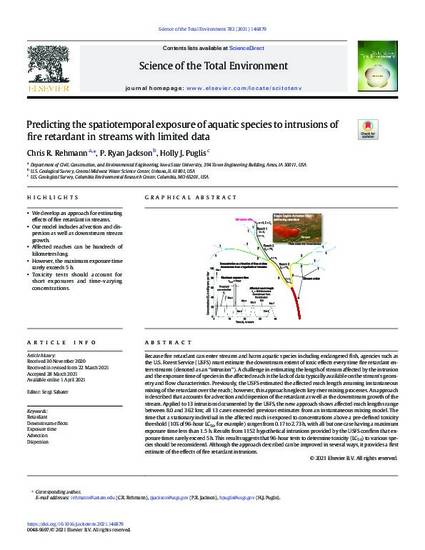
Because fire retardant can enter streams and harm aquatic species including endangered fish, agencies such as the U.S. Forest Service (USFS) must estimate the downstream extent of toxic effects every time fire retardant enters streams (denoted as an “intrusion”). A challenge in estimating the length of stream affected by the intrusion and the exposure time of species in the affected reach is the lack of data typically available on the stream's geometry and flow characteristics. Previously, the USFS estimated the affected reach length assuming instantaneous mixing of the retardant over the reach; however, this approach neglects key river mixing processes. An approach is described that accounts for advection and dispersion of the retardant as well as the downstream growth of the stream. Applied to 13 intrusions documented by the USFS, the new approach shows affected reach lengths range between 8.0 and 362 km; all 13 cases exceeded previous estimates from an instantaneous mixing model. The time that a stationary individual in the affected reach is exposed to concentrations above a pre-defined toxicity threshold (10% of 96-hour LC50, for example) ranges from 0.17 to 2.73 h, with all but one case having a maximum exposure time less than 1.5 h. Results from 1152 hypothetical intrusions provided by the USFS confirm that exposure times rarely exceed 5 h. This result suggests that 96-hour tests to determine toxicity (LC50) to various species should be reconsidered. Although the approach described can be improved in several ways, it provides a first estimate of the effects of fire retardant intrusions.
Available at: http://works.bepress.com/chris_rehmann/27/

This article is published as Rehmann, Chris R., P. Ryan Jackson, and Holly J. Puglis. "Predicting the Spatiotemporal Exposure of Aquatic Species to Intrusions of Fire Retardant in Streams with Limited Data." Science of The Total Environment 782 (2021): 146879. DOI: 10.1016/j.scitotenv.2021.146879.